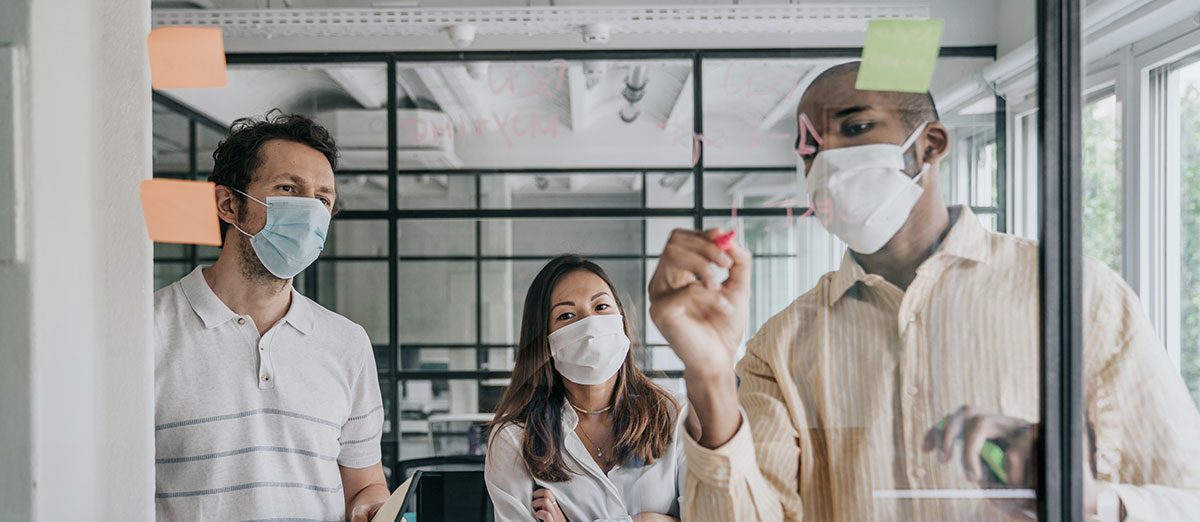As we move to re-occupy our public spaces during the COVID-19 pandemic, our workforce and the general public will be looking to building owners and operators to provide a safe space by minimizing the risks around the transmission of SARS-CoV-2, the strain of virus that causes COVID-19. One request our team of experts are seeing more and more frequently is to test for the SARS-CoV-2 virus in the air and on surfaces within buildings. However, focusing on detecting the virus in our buildings is the wrong approach to managing the risk of transmission given the reasons presented below.
SARS-CoV-2 is spread primarily via respiratory droplets during close interactions between individuals. As a secondary means, the virus is spread by contact with contaminated surfaces. While there is an acknowledgement that the virus may be spread indoors over longer distances through the air, this is not considered a significant means of transmission.
Fundamentally, managing the risk of the SARS-CoV-2 virus in buildings is related to the five primary management controls.
The Five Primary Management Controls include:
1. Staying home when sick
2. Maintaining physical distance between occupants
3. Maintaining access to hand washing facilities
4. Maintaining cleanliness of surfaces
5. Maintaining high ventilation rates while controlling draft

Why you need an effective Verification Program
A meaningful Verification Program related to COVID-19 risk mitigation should provide confirmation that these primary management controls are in place and effective. Testing for the SARS-CoV-2 virus does not accomplish this goal because the SARS-CoV-2 virus will only be present in the air and on surfaces should the management controls fail. At this point, it’s too late.
At a minimum, an effective Verification Program should include the following:
• Regular inspections to ensure the controls around physical distancing and personal hygiene are being maintained.
• Surface tests to confirm that cleaning is effective. This can be accomplished by sampling for Adenosine Triphosphate (ATP) or by collecting total bacteria swabs.
• Examination of HVAC equipment to ensure filters are functioning properly and that ventilation has been increased.
• Measurement of carbon dioxide and airborne particulate to demonstrate ventilation controls are effective.
Testing for the SARS-CoV-2 virus following the occurrence of a confirmed case of COVID-19 in a building and the subsequent cleanup can be useful. Testing for the SARS-CoV-2 virus can be used in addition to a visual inspection for cleanliness, oversight of cleaning practices, and ATP surface testing to provide an additional layer of confidence that the cleanup was successfully complete.
If you need help in assessing the efficiency of your current Verification Program or in developing a new Program for your buildings, please contact your local Pinchin office.
Check our COVID-19 Services page for more information on the services we can and have been providing to our clients across Canada.